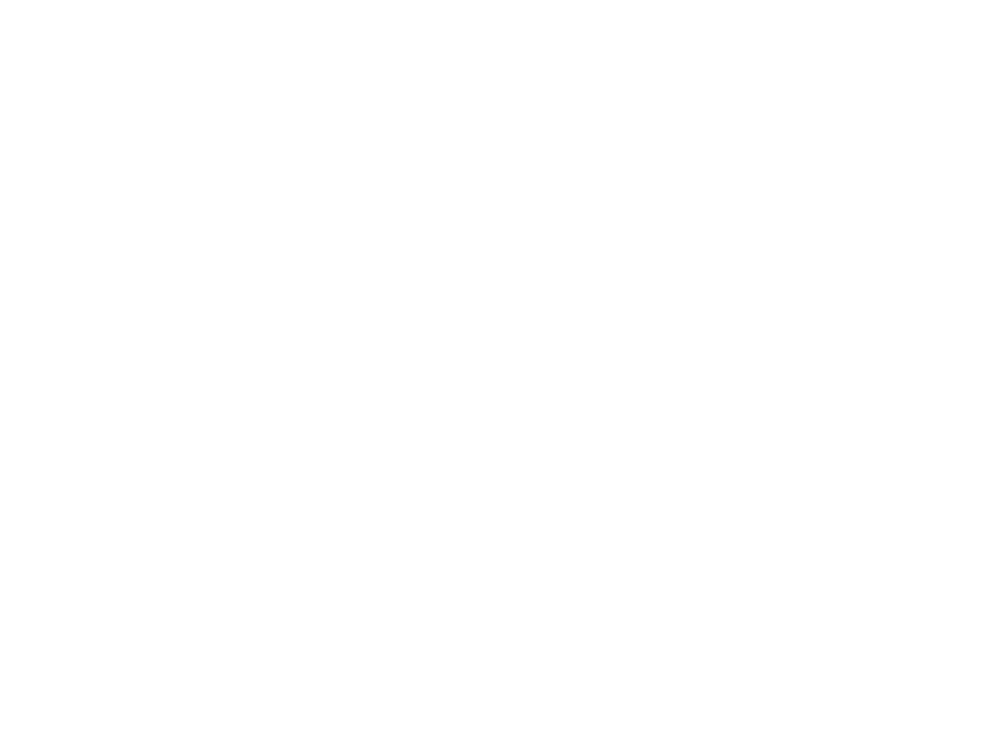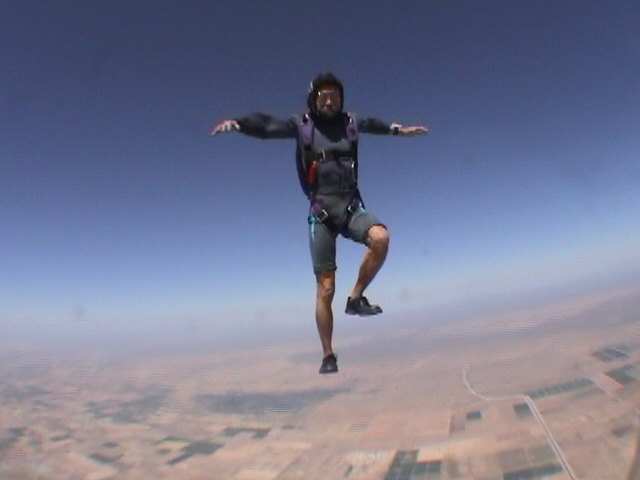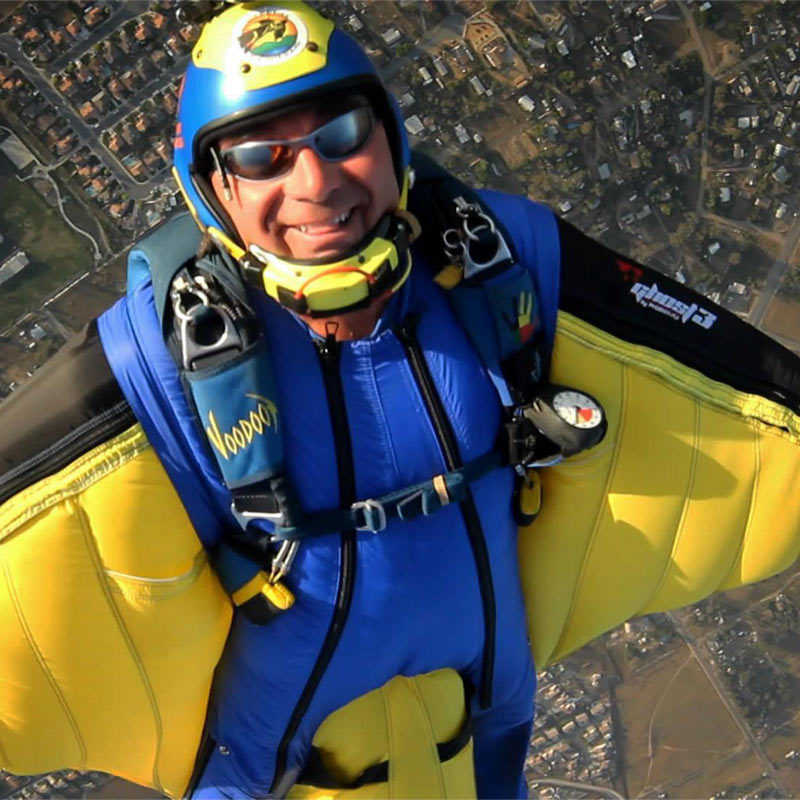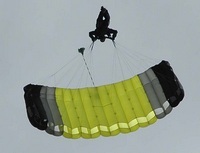Recommended Posts
QuoteIt's all about scanning, which you should be doing anyway. Up, down, around, landing area, etc. No your eyes aren't restricted to looking down.
And how much time is required to discern the landing direction of all the people in front of you in the pattern, checking to see if you still have a viable out *and* scanning for canopies around you? Some of the more experienced people may be able to do this in their sleep but I sure as hell can't calculate that much stuff *reliably* on *every* jump. What I'm focussed on right now is the people approximately on my level and anyone doing stupid shit, with FPD I have to focus on that *and* everyone landing in front of me.
QuoteThird person plans on chewing out the confused jumpers when he gets down, and in the mean time finds an open area to land.
Your DZ may have plenty of viable open outs and only few jumpers in the air such that the 3rd person down is at 2000ft as you'd said earlier. There are plenty more people at my DZ resulting in the first several people being in the pattern at the same time, well below 2000ft.
QuoteBecause the first person sets the pattern, and everyone after him follows. You don't have to see the first to know which way the pattern has been set... you look at those who followed. If there really is that much space between experienced folks and the low-timers, then it's a new start... now it's time for the low-timer to look at the wind sock and choose which way to land.
So, anyone with a large gap gets to choose which direction they're going to land? The students don't see anyone landing and then have to figure it out?
QuoteIt's a different solution and I'm not saying it's worse... but on no-wind days you're going to have jumpers who didn't ask about the pre-declared direction, came in from other DZ's where the standard is different, or they just wanted to land their own direction.. the problem of people landing different ways will still exist.
No. We're all in the loading area at the same time and everyone agrees which direction to land. It's shouted *loudly* in the loading area *and* on the plane. Anyone that doesn't land in the agreed direction is pulled aside by other jumpers and told to get their shit together.
QuoteIf there's any wind, then it shouldn't be a mystery direction... the first one down should be deciding which way to go based on wind sock, tetrahedon, or DZ rules that say which way to head.
It *is* a mystery because the first person down decides in the air. How is that not a mystery? On one hand people are saying that pre-determined direction doesn't help if the wind changes and that FPD is better because you can chase the wind sock? Again, a downwind landing with a PLF or a possible collision? I'd take the PLF any day.
QuoteOnce again, you're missing the point: You and everyone else should create vertical separation so that you're not surprised at the last minute. Plan well in advance... there should be a very low possibility of last-minute surprises if you create separation.
How can *everyone* create vertical separation if *everyone* is hanging in brakes? Again, probably inexperience talking but doesn't that mean we're all just hanging up there in the order we were before, separated by the same vertical distance?
If people put themselves in the shoes of the FPD, it probably seems like a good rule because you know your own skills and you know you're generally very good at working it out. For me, low jump numbers, love the canopy but so much to learn, the *last* thing I want is for some person who's overly sure of their own skills deciding which direction looks best. The FPD may be some amazing canopy pilot that knows the DZ like the back of their hand but what if they're not? The FPD only seems to grant flexibility, in reality it grants flexibility to the first person down *only*. For everyone else, it's pot luck.
The FPD is at least partially decided by the exit order from the plane, so if there are 3 belly groups, all low jump numbers, they're all opening at 3.5k who's racing them to the ground to set the landing pattern right?
I'm sure a lot of my ranting is born out of my inexperience, I need to remind myself (less so recently) that any time it seems black and white or, at least relatively straight forward, that's more than likely because I don't see the big picture. In this case I feel *very* strongly about this and it *seems* crystal clear, that's a couple of red flags right there. Unfortunately, I've yet to hear a convincing argument for FPD over pre-determined landing direction. I'm hoping someone can convince me because with all these experienced people saying it's the best way but not really giving good reasoning (again, maybe too inexperienced see the reasons are good) I'm left wondering what I'm missing and therefore how safe I am with the possibly mistaken perception that FPD seems like a clusterfuck waiting to happen.
murps2000 87
Like most things in life, there is no black and white and nothing is crystal clear. There are often only smokey shades of grey. I'll admit that I like FMD for reasons that may not be the best, but what needs to be reiterated is that this rule is definitely not the way to go for all dropzones.
Last time I was at Skydive Orange (a while ago) it didn't seem like a good strategy for them. They have a nice highly visible tetrahedron, however, and had rules that made use of it. From more recent aerial photos I've seen, it appears that the number of obstacles surrounding the main landing area has not decreased as the years have gone by, so aborting an approach at 500' to land out would likely be more hazardous than at some other dropzones.
Last time I was at Perris (a little less time ago) they had what was essentially a linear main landing area. It was basically a parachutist runway next to the real one, in which jumpers would land in one of two directions. The winds do shift direction quickly there, so a predetermined direction decided upon boarding may or may not result in everyone landing in the "safest" direction. I can also see how a tetrahedron indicating a crosswind could create more confusion than just letting FMD select landing direction. It's defensible confusion, too, because everyone can claim they were following the tetrahedron. Perris also had plenty of room for dissenting jumpers to land out and a seperate landing area for students.
There's no golden rule that works at all dropzones, and additionally, whatever strategy is employed to govern landing direction in the main landing area should not apply to students and tandems if at all possible.
My first time there, I asked for a briefing on the landing pattern. My exact briefing: "Don't kill anybody."
And by the way, I don't disagree with you. But just to play devil's advocate... At Eloy during the nationals, they put up about 130 loads in one day, all using the first person down rule. I didn't see more than a couple people landing the wrong way over a week there, and the landing direction shifted 180 degrees many times most days. At your DZ, I've seen 50% of a load land one way and the other half land the opposite way... all intermixed.
Dave
Ah, the Ranch. The Ranch may have no rules but every load I've been on, a landing direction is decided upon by the jumpers on the load. Sometimes, amusingly enough, actually on the plane. Even if the DZ doesn't have rules, doesn't mean the jumpers don't work it out. It ends up that everyone (willing) gets involved in making the choice.
The briefing I give to new people coming to the Ranch is exactly what I was told as a student: left hand pattern, where the holding areas are, normal direction etc. plus a little reality check.
I've definitely seen people landing all over the place and it's stupid but FMD won't change that. Maybe my (limited) experience at the Ranch qualifies me to actually say something about landing direction? ![]()
The main point of my argument is that, for the most part, issues with pre-determined landing direction all exist for FMD but with less certainty. (again, inexperienced, could be wrong here)
But only setting a pattern has its limits. At your DZ (I did more jumps there this year than at my home DZ), I haven't had many problems myself. But I witnessed a lot of close calls... way too many. My last jump there was interesting... sunset load and half the plane had decided to land one way while the other half decided to land the other way (and of course we all thought everybody agreed). That's one of the problems with the not having a first person down rule... first person down landed the "wrong way" (to me). The next person didn't follow and landed the opposite way. Then half the load proceeded to land one way and the other half landed opposite. If everybody just changed their patterns to match the first person down, it would have been much safer. And of course it would have been even safer if communication hadn't broken down before we left the plane in the first place.
It's a complicated issue... Using a predetermined landing direction only works when there's effective communication of the landing direction. That means a visual (and fixed) landing direction indicator (never seen one in action myself) or a way of ensuring that landing direction is set in stone before boarding the plane.
Another way I've seen it fail at your DZ is when it's really busy and multiple loads are mixing in the pattern on a light wind day. It's up to each load to determine their landing direction. Loads don't communicate with each other. I've been in the pattern when either the first people from the next load or the last people from the previous load were in the pattern at the same time, landing in the opposite direction.
I'm not knocking your DZ (ok maybe a little)... just pointing out that it's a complicated issue. There are cases where a first person down rule would solve traffic pattern conflicts. And your no-rules DZ is a perfect example.
Dave
chuckakers 426
QuoteEspecially if the winds are 15 knots or so.
If the first man down can't figure out which way to land with a 15 knot wind, I'm going to land into the wind and then tell him he's a f*cking idiot. Hell, you don't even need a wind indicator to figure the wind direction at 15 knots.
D-10855
Houston, TX
I mean if I am going to do one intentionally I'll check there is no one too downwind and low so he won't be able to make it.
I agree 15 kts it a bit too much, but it's good to have occasional downwinders and surprises thrown in. It keeps one aware and be prepared to changes and I think that saves lives.
BUBLHED 0
DSE 5
QuoteI set the pattern downwind at Eloy one day. The wind was light and variable from the NNW-NNE. The LZ nazi was on me in a flash to give me hell.
Setting a downwinder in this wind direction would suggest you were landing in the South landing area; this is the student area, and only to be landed into the wind from north or south. Downwinds are not to be done in that landing area. If you were in the North landing area, this would be a crosswind landing, and generally shouldn't be a problem unless you cross where the LZ is divided in half. There is also a beer line there.
QuoteAs I said, I generally agree with you.
Noted.
QuoteBut only setting a pattern has its limits. At your DZ (I did more jumps there this year than at my home DZ), I haven't had many problems myself. But I witnessed a lot of close calls... way too many. My last jump there was interesting... sunset load and half the plane had decided to land one way while the other half decided to land the other way (and of course we all thought everybody agreed). That's one of the problems with the not having a first person down rule... first person down landed the "wrong way" (to me). The next person didn't follow and landed the opposite way. Then half the load proceeded to land one way and the other half landed opposite. If everybody just changed their patterns to match the first person down, it would have been much safer. And of course it would have been even safer if communication hadn't broken down before we left the plane in the first place.
Exactly how does FPD fix this? We can't stop people being idiots unfortunately, pre-determined landing direction doesn't absolve anyone from staying in the pattern. I guess it's really the same thing, with PDP (pre-determined pattern - sick of typing it
QuoteAnother way I've seen it fail at your DZ is when it's really busy and multiple loads are mixing in the pattern on a light wind day. It's up to each load to determine their landing direction. Loads don't communicate with each other. I've been in the pattern when either the first people from the next load or the last people from the previous load were in the pattern at the same time, landing in the opposite direction.
Again, how does FPD fix this? We're now expecting each load to be watching that far ahead? I know we sometimes have 3 otters going at which point it gets to be a bit crowded. In reality, people are just going to be (or should be) watching the couple of canopies in front of them and doing what they do.
QuoteI'm not knocking your DZ (ok maybe a little)... just pointing out that it's a complicated issue. There are cases where a first person down rule would solve traffic pattern conflicts. And your no-rules DZ is a perfect example.
I don't have anywhere near enough experience to really argue against anyone, just stating my reasoning. What I'm wondering is why you think that people who ignore the agreed pattern would adhere to a FPD method? They didn't listen to one rule, why listen to some random person who beat them down?
I'd be fine with the DZ setting the direction with a big (fixed) arrow that points in which ever direction is safest
BTW, I'd like to chat next time you're at the Ranch, I'm really not the giant douche my posts make me out to be. Ok, well, I really am but I have an accent so it's ok (apparently).
murps2000 87
If the first man down can't figure out which way to land with a 15 knot wind, I'm going to land into the wind and then tell him he's a f*cking idiot. Hell, you don't even need a wind indicator to figure the wind direction at 15 knots. ***
Maybe he figured correctly but just differently than you or I might. If I'm under canopy at DZ where FMD is the rule, the first man lands downwind, and I don't want to, I'll land into the wind, too. But I'll land out and take my sweet time walking my tiny balls back to the packing area while I rethink my main canopy choice.![]()
QuoteAt big DZ's with huge grassy landing areas and steady winds, predeclared landing directions work great.
At DZ's with small, linear landing areas and frequent (and strong) wind shifts, first person down works well.
That was confusing to me.
With huge grassy landing areas there would be more options for landing direction regardless of the winds.
Small, linear landing areas would seemingly present fewer options on direction.
QuoteIn both cases all jumpers MUST be able to see what direction others are landing and take appropriate action to avoid landing pattern conflicts.
The discussion seems to center around who is creating the conflicts. The answer is simple...the FMD. The answer is simple - eliminate the FMD rule, reduce conflicts.
Think. The FMD is usually an experienced skydiver. Who is behind him? The less-experienced. When the FMD creates the conflict, I for the life of me, cannot understand how one can expect the less-experienced to cover for him to overcome the problem he created.
It is unreasonable to expect that.
IMHO, the FMD rule is anarchy at its best.
I think we're all Bozos on this bus.
Falcon5232, SCS8170, SCSA353, POPS9398, DS239
Both systems work only if you make them work.
I can see in a predetermined case if someone lands different, it's only going to be one off, the the rest can go predetermind. You don't need much brain for that...but then people coming from a dz that does no downwinders, or people who has dislike about it go to a different dz like Eloy, they are a risk, and then there wil be talk about how dangerous that dz is, but actually they just haven't got the skill that is really important and downsize their canopy.
A dz like that should make efforts so that people can practise crosswind and downwind when suitable oppotunity arise. I think people can start practising this from low jump numbers.
In a FMD the confusion created by the one who doesn't follow this rule can become kaos , so we need a rule what to do in this situation.
1) Still follow the FMD....maybe someone has only seen the change of direction and thinks that's the correct direction?
2) Follow the change of direction and make that the post-set derection and everyone follows?
I think that may be the issue that needs to be discussed.
what do you reckon?
denete 3
QuoteIMHO, the FMD rule is anarchy at its best.
The blind leading the naked.
"our attitude is the thing most capable of keeping us safe"
(look, grab, look, grab, peel, punch, punch, arch)
billvon 3,179
Correct. There are basically only two; it's pretty obvious what's happening there.
>The answer is simple...the FMD. The answer is simple - eliminate the FMD rule,
>reduce conflicts.
If eliminating the first man down rule eliminated the first man down, that might make sense. But it doesn't.
>When the FMD creates the conflict, I for the life of me, cannot understand how one
>can expect the less-experienced to cover for him to overcome the problem he
>created.
Correct. And that is true whether the FMD rule is there or not. You cannot, under any circumstances, land against traffic, even if you "are in the right" because you're following the predeclared pattern (or the first man down for that matter.)
Quote...but actually they just haven't got the skill that is really important and downsize their canopy.
what do you reckon?
I reckon that one should recognize that not all jumpers have the same skill levels and they we all should make way for the less-experienced.
The FMD rule as depicted here for Eloy doesn't do that. In fact, it does the opposite. If they were at all concerned about the youngsters, they would have the hot rods landing out away from the designated pattern when they wanted to be "cool".
How any of this relates to skill vs downsizing I don't know where you're coming from on this wrto FMD.
I think we're all Bozos on this bus.
Falcon5232, SCS8170, SCSA353, POPS9398, DS239
strop45 0
Overall it seems like a good idea that has gone past its use-by-date.
Stay safe








.thumb.jpg.4bb795e2eaf21b8b300039a5e1ec7f92.jpg)

Look Out HERE'S JOHNNY!!!!!
Share this post
Link to post
Share on other sites